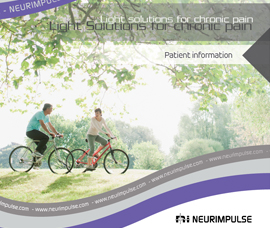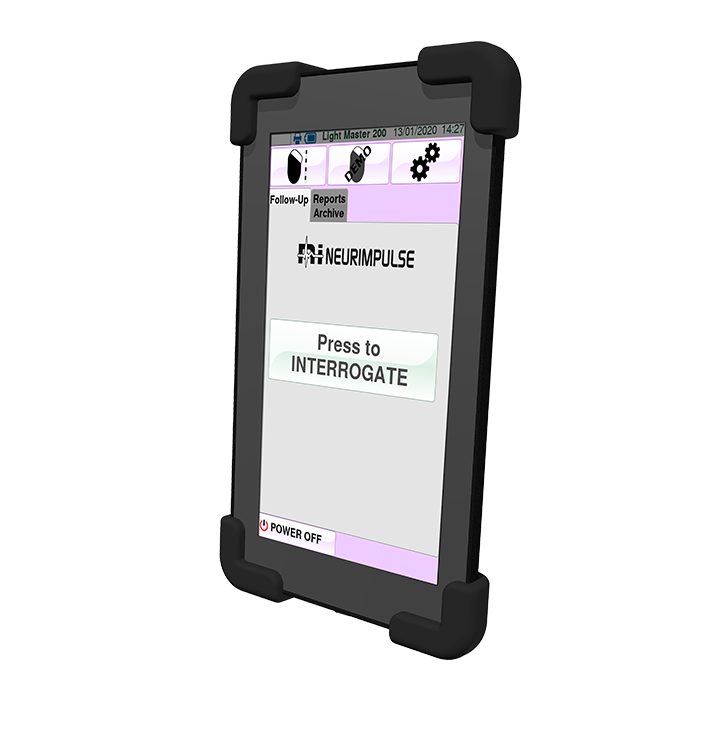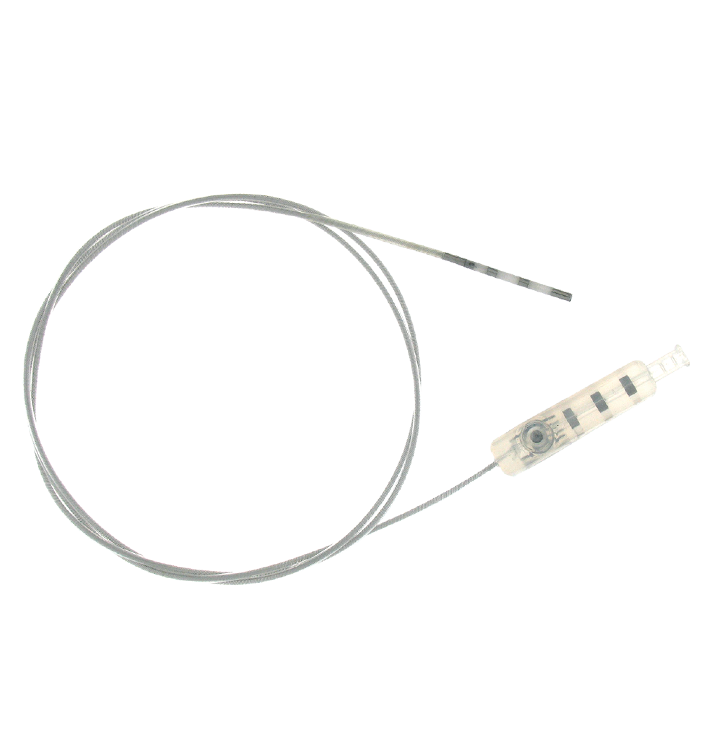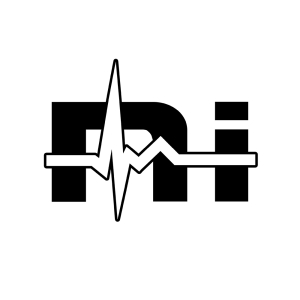
What is neuromodulation?
Neuromodulation is a pain control therapy which has been approved and recommended by doctors and
can be useful in improving the quality of life of patients suffering from chronic pain.
Neuromodulation can be central (spinal cord stimulation) or peripheral.
The Neuromodulation of the peripheral system involves targeted action in the pain area, using less invasive
methods and systems compared to central stimulation.
The Neurimpulse system for peripheral stimulation has been approved with CE mark as a treatment for
chronic pain.
Patients suffering from chronic pain arising from peripheral nervous system
should know that there are several treatment options.
One possibility is drug therapy. If drug therapy is not effective, there are other options including
physiotherapy or psychotherapy, surgery, nerve blocks or medical devices such as neurostimulators and
drugs infusion systems.
The implantation of a neurostimulator may lead to:
– A decrease in pain of 50% or more.
– Reduction or interruption of drugs intake.
– An overall improvement of life quality.
However neuromodulation does not cure the causes of pain.
The purpose of therapy is to mask pain by blocking the transmission of pain signals to the brain.
If you wish to know whether neuromodulation therapy is right for you, please contact a pain specialist.
Neuromodulation: an effective therapy
In recent years many clinical studies have been carried out in order to determine the effectiveness of this
therapy.
During these studies have been evaluated specific parameters such as, pain reduction, life quality
improvement and daily activity level.
The diagrams below show the data obtained from some of these studies.
Applications
The implant indication of Neurimpulse System
may include chronic pain conditions and
pathologies affecting the peripheral nerves
such as:
• Complex Regional Pain Syndrome type II
of upper or lower limb
• Occipital Neuralgia
• Facial pain (trigeminal neuropathies)
• Postamputation Pain
• Postherpetic Neuralgia
• Nerve entrapment syndrome (in example
Carpal Tunnel syndrome)
• Peripheral Vascular Disease Neuropathy
• Other peripheral neuropathies
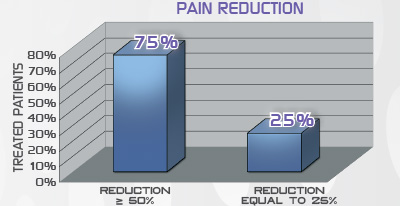
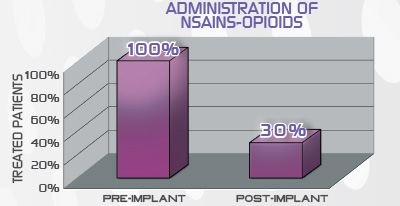
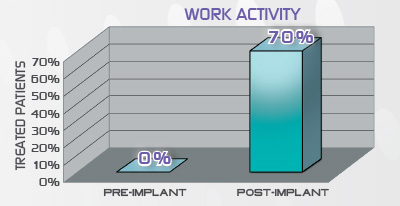
How does neuromodulation work?
Neurostimulation intercepts pain signals before they reach the brain. For this purpose, a small stimulator generating electrical signals is implanted under the skin. These signals run through the nerves, masking the feeling of pain and replacing pain with a pleasant feeling, that some patient describe like a light massage or a tingling sensation.
(1) Pain signals reach the brain through the nervous system.
(2) A generator sends electrical pulses through a lead (thin wire).
(3) The lead sends pulses to the surrounding peripheral nerves.
(4) The pulses are perceived as a pleasant sensation that replaces the painful sensation.
The intensity of the stimulation can be adjusted by the patient using a remote control.
In addition, it is possible to set different levels of stimulation at different times of the day.
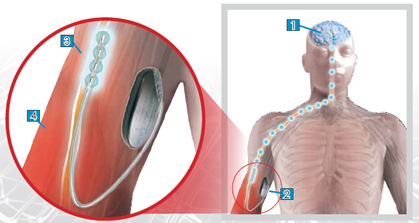
The components of the system
The peripheral neuromodulation system consists of three components.
• Neurostimulator: a pulse generator equipped with a battery.
It is normally implanted subcutaneously in a comfortable area
for the patient (depending on treated area).
• Lead: a thin wire which transmits power from the stimulator to the surrounding nerves through the active tip.
• Patient programmer: a remote control which allows the patient to vary the intensity of the stimulation.
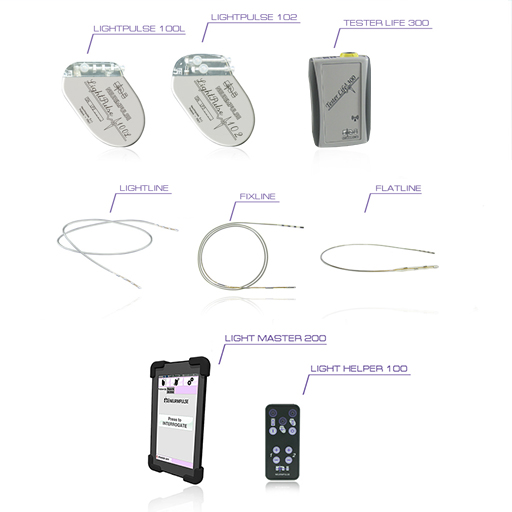

Who can benefit from neuromodulation?
An innovative system
The neuromodulation systems currently available in the market fall into two groups:
systems for peripheral nerve stimulation and systems for spinal cord stimulation.
The choice of the most appropriate system depends mainly on the position and extension of the area
affected by pain.
The Neurimpulse neuromodulation system is an innovative approach, different from existing systems on
the market, as it is specifically designed for peripheral neuromodulation.
In general, peripheral neurostimulation involves less risk than spinal cord stimulation.
This is mainly due to the less invasive technology used.
The benefits include:
– a lower risk of infection with the peripheral system because has no components located in the
epidural space
– the system implantation is easily reversible: if necessary it can be easily removed without particular risks
– the smaller size of the system compared to those designed for spinal cord stimulation.
The treatment is not significantly invasive, which means that the risks are negligible.
However, as with any medical therapy, side effects may arise.


Advantages of the system
• Pleasant tingling sensation in the painful area
• Pain reduction of at least 50%
• Reduction or interruption drugs intake.
• Improvement in quality of life (return to daily activities, work, etc.)
• Minimally invasive neurostimulator for easy positioning
• Personal aesthetics unaffected thanks to the
small size of the system.
Possible consequences
No stimulation, resulting in loss of pain relief,
due lead dislocation or to other system
problems
• Not optimal stimulation in the painful points if
the leads are dislocated from the right position
• Annoying stimulation
• Communication problems between the
neurostimulator and the remote control.
In addition, it is important to consider that the
implantation of a neuromodulation system
involves a surgical procedure and therefore
there is a risk of infection resulting in the possible
removal of the system.
Finally, any type of complication related to
the system may require additional surgery to
reposition or replace components.

Leonardo’s story (27 years old)
In 2007, Leonardo underwent surgery in order to remove a chondroma, a benign tumour that affects the bone tissue, located in the eighth rib on the right side. Approximately two months after surgery however, Leonardo began to experience severe pain in the abdominal area. Due to the long duration of pain, which limited his physical abilities, his quality of life worsened, Leonardo’s family doctor tried different treatments to control the pain. Oral medications were not very effective and had many drawbacks. After one year, Leonardo’s doctor referred him to a pain management specialist who diagnosed him with intercostal neuritis. The specialist suggested the application of Neurimpulse neuromodulation system. Leonardo underwent a trial period in order to determine whether he was an ideal candidate for the therapy. The patient reported that he felt significant pain relief in the affected area thanks to stimulation during the test period. Subsequently, in May 2011, Leonardo had the neurostimulator implanted. After the neurostimulator was implanted, Leonardo reported 90% decrease in pain, with almost complete coverage of the affected area. In addition, he stopped drugds intake. Leonardo has gone back to work and can even play football with friends.




